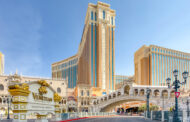Developer Schafer Richardson plans to install a living wall of plants in an apartment building it plans to construct at 721 N. Third St. in Minneapolis.
In a market where competition for renters is fierce and golf simulators and rooftop pools have become almost ho-hum, Minneapolis developer Schafer Richardson is taking a creative approach to its latest luxury apartment development. One of its projects in the city’s North Loop neighborhood will have what company Co-Founder and Principal Brad Richardson called a “winter garden” that will be lush and green year round.
It will be a signature amenity at the 139-unit, six-story apartment building the company expects to build at 721 N. Third St., Richardson told the audience during a panel discussion on downtown development earlier this month. The winter garden could give the building a competitive edge as hundreds of new apartments come online after a prolonged burst of investment and activity, one that the developers present at the summit felt may be coming swiftly to a close.
“We should all be concerned. There is supply coming on that is going to have to get absorbed, and it is very hard to make the figures work right now because construction figures are going up, rents are basically flattening and there are concessions coming into the market,” said Bob Lux, founder or Minneapolis developer Alatus. “It is a challenging time. There is a good chance that the boom we have seen in apartments will taper very quickly.”
The feature will be more like a solarium than a garden in the traditional sense, said Schafer Richardson’s Director of Development Maureen Michalski. She described it as a first-floor room on the south side of the building, which will be flooded with natural light and outfitted with a living wall of plant life about 12 feet to 14 feet high and long. In warm months, Schafer Richardson will be able to open it up onto green space outside.
The final product will be serene and spa-like, she said, with fluid transitions between indoors and outdoors, the natural and the artificial.
The wall is also a concession to the climate of Minneapolis – a city notoriously hard-bitten by winter, buffeted by 54 inches of snow in an average year and minimum temperatures that typically begin falling beneath 32 degrees in early October and stay there until late April, according to the Minnesota Department of Natural Resources.
“It will allow light in during winter for those of us who get a little seasonal affective disorder,” Schafer said.
The living wall is rare, but not unheard of, in Minneapolis multifamily buildings. Mill District City Club Apartments, a complex built on the east side of downtown in 2011, has a hallway lined with a living wall comparable in size to Schafer Richardson’s.
Nevertheless, large-scale, permanent incorporation of living verdure into interior spaces is still a bit of a novelty here and in hypercompetitive apartment markets like New York. Residents are invited to cultivate their own food and flora at the 1,100-square-foot glass greenhouse at ARC, Lightstone Group’s lavish new apartment building in Long Island City, which was distinctive enough to merit mention in the New York Times and Forbes.
ARC leased up in less than 10 months, according to Lightstone, whose executives described the greenhouse as “an enormous selling point” in a recent Times article, which also highlighted a two-year-old apartment building in Brooklyn, The Margo, which has a living wall inside and a rooftop garden for residents to plant in as well.
Schafer Richardson’s winter garden will be just one of a list of thoughtful amenities, Michalski said. The building will also offer a coworking space and a library, in addition to bicycle storage, a rooftop deck and others that are now de rigeur. Plans for the North Loop building include connecting it with a public space to the north owned by Minneapolis’ Park Board.
Schafer Richardson hopes to break ground on the first phase of the project in January, and will likely wrap up construction in late spring of 2020. Depending on how it performs and how the market evolves, Schafer Richardson could build an even more elaborate development on the two acres it owns immediately west of the site.


